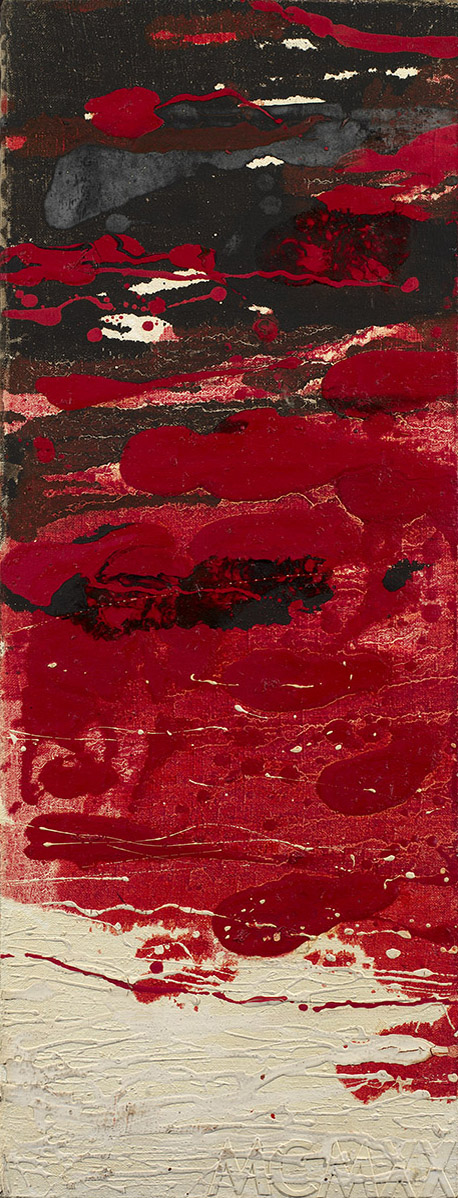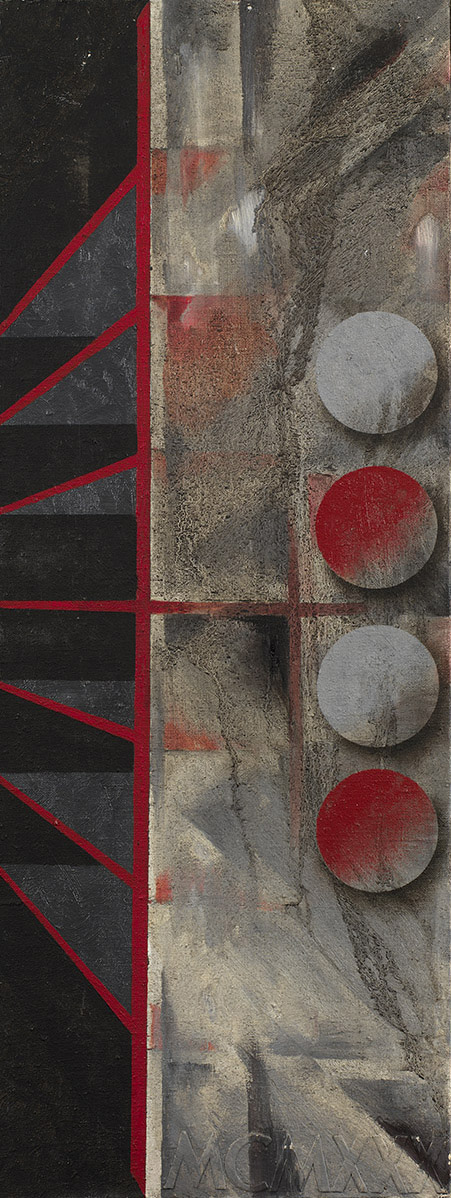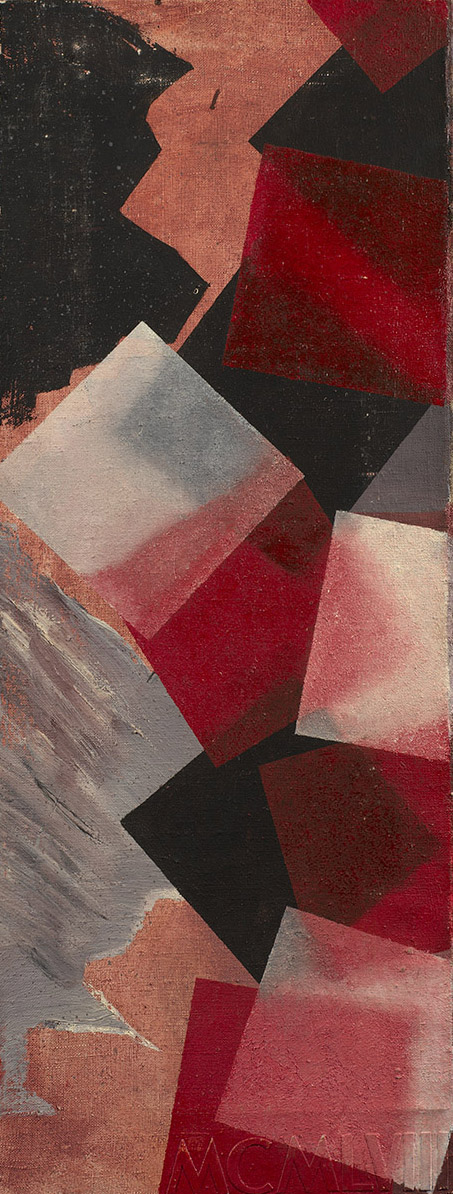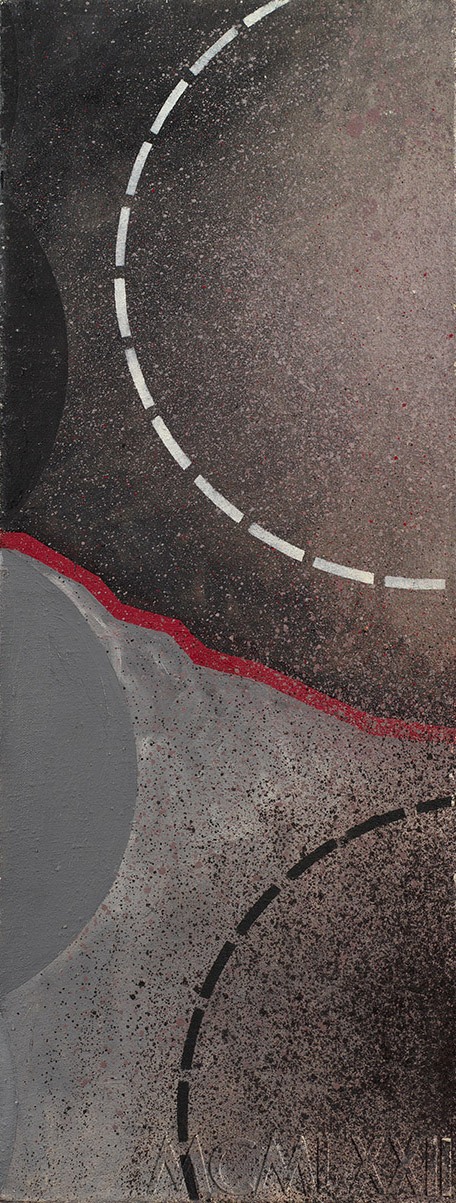4 June 2014 Russian Art Auctions
4 June 2014

*§ 427. KOMAR, VITALY and MELAMID, ALEXANDER (B.1943 and B. 1945)
The History of the USSR, 58 works, some stamped with the artists' studio stamp on the reverse.
Each tempera and oil on canvas, measuring 80 by 30.5 cm.
250,000-500,000 GBP
Panels 46–50 executed in 1962–1966, the others in 1976.
Provenance: Ronald Feldman Fine Arts, New York.
Collection of Mr and Mrs Goldberger, Puerto Rico.
Collection of the Israel Museum, Jerusalem, 1986–2006.
Acquired from the above by the present owner.
Private collection, USA.
Authenticity of the work has been confirmed by V. Komar.
Exhibited: Apartment exhibition, Komar & Melamid, Leninsky Prospekt, Moscow, 1975.
Color is a Mighty Power, Ronald Feldman Gallery, New York, 7 February–20 March 1976.
Israel Museum, Jerusalem, on permanent display from 1986 to 2006.
The History of the USSR, MacDougall’s, London, April–May, 2008.
Literature: M. Nathanson, Komar/Melamid. Two Soviet Dissident Artists, Carbondale, Southern Illinois University Press, 1979, pp. 32–34, illustrated.
C. Ratcliff, Komar and Melamid, New York, Abbeville Press, 1988, No. 55, p. 81, illustrated.
“We can imagine time as a chain of abstract images. In The History of the USSR each canvas corresponds to a symbolic image of each year, with each canvas following one another in chronological order, starting with 1917. Each canvas is painted with three colours only: red, black, white and mixtures thereof. The years of revolution are associated with the abstract expressionist style; the years of industrialisation are associated with the constructivist style and the years of the Great Terror are associated with abstract surrealist styles. Gradually, the primary colours lose their brightness and turn into different shades, of grey and brown etc.”
Vitaly Komar
The History of the USSR, by V. Komar and A. Melamid, is a key work of early Sots Art; it is of particular interest as it represents the movement in its initial Muscovite, pre-emigration guise. From the very outset the Sots artists, and especially Komar and Melamid as the founding fathers of the movement, assiduously manipulated Soviet mythology and ideology, reconstructing them, dissecting them, and turning them inside out. There was no “sacred calf ” which was immune to the attentions of the movement: Lenin and Stalin, the Aurora and the Lenin mausoleum, emblems and decorations, the pioneer tie and the roll of honour… it appeared everything was aimed at laughingly casting off Soviet history, with a nod to Marx.
Playing with Soviet mythology became the movement’s trademark, all the more so since it enjoyed an eager market in the West where Soviet motifs were readily consumed when reduced to commonly accessible ciphers and particularly when combined with iconic images from American popular culture: from the second half of the 1970s onwards almost all Sots artists headed to New York where they industriously worked at cross-fertilising solidly Soviet elements with dyed in the wool American.
The History of the USSR, as was the case with The History of Russia which preceded it, is distinguished by its monumental scale: consisting of 58 panels, each panel represents a year of Soviet history. Each panel is twelve inches wide, corresponding to the number of months in a year. There is a paradox in this, referring to the USSR’s endless anniversaries for the party, state and individual leaders. Indeed, the work also parodies the Soviet mania for ranking, control and hierarchy, which if one considers for example that an inch is a western unit of measurement, then a Dadaist automatism motif comes into play, founded upon the Soviet mythology of total accountability.
However, the most important aspect arises later on. In Soviet culture the concept of “chronicling”, along with its many lofty and zealous connotations, featured in all such anniversaries. In visual terms the concept of chronicling involved assembling what were in a sense pictograms (media pictures which were based on cinematic and photographic documents): a man with a wheelbarrow, a sentry with a rifle, a political instructor with a revolver and so on, all of whom symbolised specific points in the life of the state. Komar and Melamid selected, in place of this, a non-mimetic language, the language of abstract painting. The underground re-invigorated abstract art from the mid 1950s, but the question remained how abstract art could be applied in the context of a chronicle of the USSR, especially as officialdom was staunchly rejecting even the conventional version of abstract art, perceiving it primarily as an ideological challenge and an attempt to undermine the “Leninist theory of reflection”!
Again, however, there is here yet another layer, which lies deeper than the layer of political parody. The history of the avant-garde included a period where it allowed itself to be utilised for profoundly ideological purposes. We need only recall the formally suprematist yet thematically politically aggressive poster by El Lissitzky, Beat the Whites with the Red Blade!. I think Komar and Melamid also thought of this as they created this non-figurative canvas infused with diverse types of energy. However, they were principally calling on contemporary art forms outside of figurative representation.
In terms of correlations with realism they only used reminiscences of early Soviet engaged suprematism and strange, threatening biological forms…so the problems of selection of “language” in this large-scale and profound work of museum significance is a no less pressing one than the problem of a political stance.
Aleksandr Borovsky, Head of the Contemporary Art Department of the State Russian Museum



Notes on symbols:
* Indicates 5% Import Duty Charge applies.
Ω Indicates 20% Import Duty Charge applies.
§ Indicates Artist's Resale Right applies.
† Indicates Standard VAT scheme applies, and the rate of 20% VAT will be charged on both hammer price and premium.